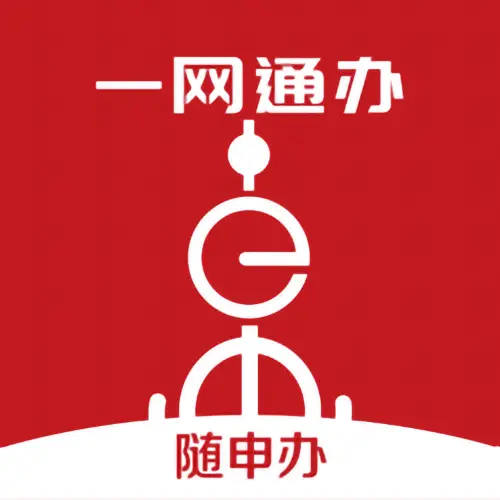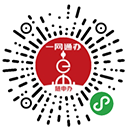1. 什么是侵权警告函?
侵权警告函是权利人以法律函件的形式,告知其享有某权利和侵权人构成侵犯其权利的事实,告知侵权行为的法律后果,并要求侵权人停止侵权及做出其他配合等主张。
2. 如何向侵权方发送警告函?
从内容和发送对象要注意如下:
(1) 警告函的内容,一般应具备如下内容。
A. 权利人信息;
B. 待主张权利的具体信息(如注册商标证书、专利证书、版权登记证书等信息);
C. 被警告人侵权行为的具体情况;
D. 侵权事实的信息,比如认为商标侵权的,是在哪些商品/服务上构成侵权;认为专利侵权的,要将被控侵权产品与拟主张的权利要求技术特征做简要归纳及比对;著作权侵权的,要将被控侵权的作品与享有著作权的作品构成相似或实质性相似进行归纳。
E. 被警告人所将要承担的法律责任以及所依据的法律规定。
F. 要求侵权人停止侵权(比如停止销售、停止展示、撤展、采取遮盖措施等),或做出其他配合措施的具体要求。
(2) 警告函的发送对象
根据主张的不同权利,可以向不同主体发出。以专利为例(涉及主体较多),可以发送的对象包括产品制造商、销售商、进口商,以及发明或实用新型产品的使用者等。以商标侵权为例,发送对方包括生产商、销售商等。
但如果警告函针对的是竞争对手的交易伙伴时,因竞争对手的交易伙伴是双方争夺的目标客户群,权利人的发函行为必然会对竞争对手的业务产生影响,此时权利人发函时应当更加慎重。
3. 收到知识产权侵权警告时,该如何应对?
主要应对宗旨是一要重视、二要冷静分析。如果企业自己应对没有把握,要求助专业律师。具体如下:
(1) 对警告函内容进行初步分析,如果警告函内容不明确(可以对照上面第2个问题),简单回函并要求权利人提供相关材料;如果警告函内容明确有针对性,初步判断或者委托专业委托分析侵权的可能性;
(2) 经分析后,如明确不侵权或侵权风险小,可以回信告知并要求权利人撤回该警告函。如权利人不撤回警告也不提起诉讼而该侵权警告函对己方业务造成影响,可以考虑向人民法院提确认不侵权之诉。如侵权风险较大,则可考虑对方权利是否稳定,是否有釜底抽薪的可能性,并进一步确定如何与对方沟通。
4. 侵权警告的法律效力和法律后果是什么?
警告函是权利人的一种自力救济方式,本身并不具有强制力,主要是通过警告侵权人相应法律后果的方式促使其停止侵权行为和促使双方进一步沟通。
发送侵权警告函应遵守诚实信用的基本原则,发送警告函之前要进行分析,警告事实需有明确依据,避免引发后续的确认不侵权之诉。另,警告函内容应避免对竞争对手产品进行诋毁性描述或虚构事实,否则可能引发后续的商业诋毁侵权之诉。
1. What is a warning letter?
A warning letter is the formof legal letters adopted by the right holder to notify that it enjoys certainrights and the fact that the infringer has constituted infringement on itsrights, to notify the legal consequences of the act of infringement, and torequire the infringer to stop the infringement and offer other cooperation.
2. How to issue a warning letter to the infringer?
Please pay attention to theinformation below for the contents and targets of the warning letter.
(1) Generally speaking, a warning letter shall have the followingcontents.
A. Information of the right holder;
B. Specific information on the right to be claimed (such ascertificate of the registered trademark, certificate of the patent, certificateof the copyright registration, etc);
C. Specific description of the act of infringement by the person beingwarned;
D. Information on the facts of infringement. In the event of anyinfringement upon the trademark, state the commodities or services where theinfringement is constituted; in case of any infringement of patent, make asimple summary and comparison between the infringed products and the technicalfeature of the right requirements to be claimed; in case of any infringement ofcopyright, summarize the similarity or material similarity between theinfringed works and the works with the copyright.
E. Legal responsibilities to be assumed by the person being warnedand the laws and regulations on which the responsibilities are based.
F. Requiring theinfringer to stop infringement (such as stop selling, stop exhibition, removalof exhibits, taking the measures of covering, etc) or specific requirements ofother cooperative measures.
(2) Targets of the warning letter
A warning letter may be issuedto different subjects according to different rights to claim. As for the patent(which involves with relatively many subjects), the targets to be issuedinclude the manufacturer, retailer and importer of the products, and the userof invention or utility model. As for infringement of the trademark, thetargets include the manufacturer and retailer.
]If the warning letter istargeted at the trading partner of the competitor, the right holder shall bemore cautious when issuing a warning letter, as the trading partner of thecompetitor is the target customer both sides are striving for, and the act ofissuing a warning letter by the right holder will absolutely affect the businessof the competitor.
3. How to handle if receiving a warning on infringement of intellectualproperty rights?
/First, pay attention to thewarning; second, calm down to analyze, which is the main principle in responseto the warning. The enterprise may turn to a professional lawyer if it is notsure of handling by itself. Please refer to the below for specifics.
(1) Conduct preliminary analysis on the contents of the warning letter.In the event of any inaccurate contents on the warning letter (may refer to thesecond question above), make a simple reply letter and require the right holderto provide relevant materials; in case of any specific contents on the warningletter, make preliminary judgement or entrust a professional lawyer to analyzethe possibility of infringement.
(2) After analysis, in the event of any confirmation of no infringementor low risks of infringement, the enterprise may write back to notify andrequire the right holder to withdraw such warning letter. If the right holderneither withdraws the warning letter nor files a lawsuit while such warningletter has exerted influences on its business, the enterprise may considerlodging a complaint of no infringement to the people’s court. In the event ofany high risks of infringement, the enterprise may consider whether the rightof the holder is stable, whether it is possible to take drastic measure andfurther determine how to communicate with the other side.
4. What is the legal force and legal consequences of the infringementwarning?
The warning letter is oneself-remedy of the right holder and has no compelling force itself, which ismainly to prompt stopping the act of infringement and further communication ofboth sides by warning the infringer of the corresponding legal consequences.
Delivering a warning lettershall be subject to the principle of honesty and credit. Analysis shall beconducted before delivering the warning letter and facts of warning shall haveexplicit basis, so as to avoid a complaint which is confirmed to be no infringementlater. In addition, contents of the warning letter shall avoid the slanderingdescription or fictional facts towards the products of the competitors, whichmay otherwise lead to a subsequent litigation of business discreditinginfringement.



